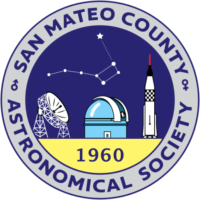As we enjoy August 2024, the eyes of the astronomical world are fixed on a groundbreaking development in the Chilean desert. After 13 years of meticulous construction, the Vera Rubin Observatory is set to achieve “first light,” a pivotal moment when its 8.4-meter-wide mirror will collect light from the cosmos for the first time. Some of you may recall visiting SLAC and witnessing part of this telescope’s assembly—it was known as the LSST back then. Now, this extraordinary instrument, equipped with the most powerful camera ever built, is about to make history. This event marks the dawn of a new era in our exploration of the universe.
Move over, Euclid—there’s a new giant in town. The Rubin Observatory isn’t just another state-of-the-art telescope; it represents one of the most ambitious projects in astronomical history. Unlike other observatories that offer focused studies of specific celestial objects, Rubin is set to conduct a full survey of the entire sky every three nights. By dividing the sky into segments, it will return to each section every few nights, tracking any changes—whether it’s a new asteroid, a star going supernova, or even a distant black hole’s activity.
The scale of this operation is staggering. Over its 10-year mission, Rubin will detect approximately 20 billion objects and flag 10 million changes in the sky every single night. This will culminate in the collection of 60 petabytes of data—a volume 500 times greater than what the Hubble Space Telescope has amassed over the past 34 years.
But what makes the Vera Rubin Observatory truly revolutionary is its ability to keep pace with the rapid influx of data. The observatory is equipped with the most advanced digital camera ever built, boasting a 3.2-gigapixel sensor array. This colossal camera will capture the universe in unparalleled detail, producing images 267 times larger than those taken by a typical smartphone camera.
The Rubin Observatory’s main scientific objectives are just as impressive. It will create a comprehensive 3D map of the universe, which will be instrumental in tracing the distribution of dark matter, a mysterious substance that makes up about 85% of the universe’s mass but cannot be directly observed. By mapping the positions and movements of galaxies, the observatory will help scientists infer the presence of dark matter through its gravitational effects, providing crucial insights into how this elusive substance influences galaxy formation and evolution. While it promises to unveil countless known objects, perhaps the most exciting prospects lie in the unknown—the unexpected discoveries that will undoubtedly arise from the vast amounts of data collected.
As we prepare for this deluge of information, it’s clear that the Vera Rubin Observatory is poised to transform our understanding of the cosmos. This groundbreaking project will provide insights that could redefine our place in the universe, and the San Mateo County Astronomical Society will be able to witness this historic moment.
